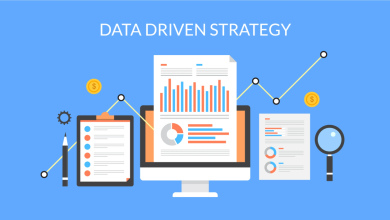
Energy bills can sometimes be shocking if you’re not paying attention to your contract renewal dates. You could be spending hundreds or thousands more each year than you should. But the good news is that you can take control. With smart timing and some strategy, renewing your energy contract can go from an overlooked admin task to a money-saving win. Here are some tips to align your business energy contract renewal to grab the best rates.
Don’t Act at the Eleventh Hour
Most business owners make the same mistake of waiting until the final week, or even the last day, before checking their energy contract. By then, great options are limited. It’s almost like when you delay trying to connect energy or any other reliable provider, you miss out on deals that were once on the table.
In Australia in 2025, energy providers typically allow you to review and lock in new rates before your contract end, usually for 12 months. That gives you time to compare, negotiate, and avoid panic decisions.
Pro tip: Mark your calendar 4-6 months before your contract expiry, as it is your golden window to grab exciting rates.
Understand Market Cycles
The Australian (or any) energy market doesn’t stay still. Wholesale prices fluctuate depending on demand, supply, policy changes, and events like bushfires, coal plant closures, or international fuel price shifts.
If you try to renew during a price spike, you’ll get stuck with a high rate. But if you lock in when the market is quieter, you can ride out future increases.
Here’s what helps:
- Track the market with updates from the Australian Energy Market Operator (AEMO).
- Keep a close eye on the seasonal trends. Prices often rise in winter (especially in Victoria and NSW) and during summer heatwaves.
Spy on Other Bills
Comparing your rate to what other businesses are paying gives you an edge.
Websites like Energy Made Easy (run by the Australian Government) or commercial brokers let you compare offers in your region. Don’t forget to ask other local businesses what rates they’ve recently secured.
If you’re paying way more than others, that’s a red flag.
Lock in When Rates are Low
Renewing your contract during peak usage months is a common trap. That’s when demand is high, and so are prices.
The smarter move is to renew during off-peak periods when retailers are more likely to offer competitive deals. For most Aussie businesses, that means late autumn or early spring, before the spikes of winter heating or summer cooling hit the market.
Consider a Longer-Term Deal in Volatile Markets
When wholesale prices are rising sharply, consider locking in a fixed-rate deal for 2-3 years. It gives you cost certainty and protects you from sudden hikes.
On the flip side, if prices are falling or look unstable, a shorter-term contract (12 months) might give you more flexibility.
There’s no blanket solution here as it depends on your risk tolerance, cash flow, and industry needs. But the key is to avoid auto-renewals and actually think about the timing.
Don’t Just Accept the First Offer
When your current provider sends a renewal offer, treat it as a starting point, not the final price. Energy retailers in Australia are in a competitive space. They expect you to negotiate.
- Ask them to match or beat competitor rates.
- Mention your contract history or loyalty.
- Be prepared to walk if the deal isn’t sharp.
Even a 1-2 cent difference per kWh can lead to thousands in savings annually, depending on your usage.
Keep an Eye on Regulatory Changes
Feed-in tariffs, carbon emissions targets, and subsidies in Australia shift annually, impacting energy pricing.
For example, the rollout of renewable projects or transmission upgrades might cause temporary volatility, but could lead to lower prices in the future.
Staying updated through the Australian Energy Regulator (AER) or news from your industry can help you time your renewal better.
Think Beyond Just Price
Cost is king, but it’s not the only thing. Look at:
- Contract terms (exit fees, flexibility)
- Billing frequency
- Customer support
- Renewable energy options
If two deals are close in price, choose the one that offers better service or more flexibility.
Don’t Forget Demand Changes
If you’re a medium to large business, you’re probably paying demand charges. These are based on your peak usage, not just overall consumption.
Review your load profile with an energy consultant or broker. If your usage pattern has changed post-COVID or due to operational shifts, renegotiating demand charges during your renewal can save big.
Final Thoughts
The difference between a well-timed contract renewal and a rushed one? A rushed electricity switch often costs thousands of dollars. So take the reins early, watch the market, compare widely, negotiate hard, and choose a contract that works for your business today and protects you tomorrow. In energy buying, timing and profitability matter.





